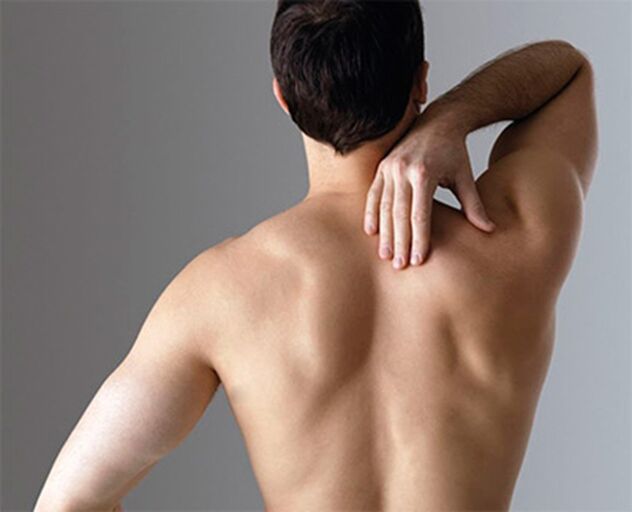
Back pain in the shoulder blade region is a characteristic symptom not only of spinal disorders but also of internal organ pathologies. Why is it necessary to consult a doctor and with which specialist to make an appointment? Effective methods to get rid of discomfort.
If you are concerned about back pain in the shoulder blade region, this symptom may indicate spinal or shoulder girdle disorders, nerve pathology, somatic disorders. Careful collection of the patient's history and complaints allows us to identify the cause of the problem and decide on further treatment.
Back pain in the shoulder blade region is often the first sign of pathological changes in the body. And the definition of the triggering factor helps prevent the disease from getting worse at an early stage. The symptom can occur in the middle of the body or spread to the arm, appearing on inhaling - all of which are important to make a diagnosis.
The causes of pain and its location
As a rule, discomfort arises in the shoulder blade area during movement. For example, an extended static position of the body, an awkward curve. In that case, pain under the scapula indicates damage.
Important! Unilateral location of pain (left under the scapula or right) is rare. This is due to the symmetrical arrangement of the spinal cord nerve roots.
Traumatic Injury
Painful sensations can signal muscle or bone damage. In this case, the symptom is diffuse and of variable intensity. Pain arises sharply and persists.
Lesions that can cause pain in the shoulder blades:
With lesions in the area of damage, soft tissue swelling is observed, pain appears abruptly. Oftentimes, crunching occurs during movement.
Spinal protrusion and hernia
With this condition, the spinal cord and nerve roots are compressed, which is accompanied by impaired sensation and sharp pain under the right and left scapula.
Possible discomfort in the location:
Observation!With protrusion, the pain persists even at rest. This is due to compression of the nerve roots and muscle spasm.
osteochondrosis
If the back hurts in the shoulder blade area, the symptom may indicate osteochondrosis of the thoracic spine. The symptom is due to compression of the spinal cord or nerve roots and deformation of the intervertebral disc. The disease progresses gradually, causing increasingly vivid symptoms.
The area of discomfort is determined by the location of the injury:
Observation!In osteochondrosis, the pain is unilateral.
Spondyloarthrosis
This pathology is also characterized by the unilateral placement of the pain syndrome. In spondyloarthrosis, there is a violation of mobility, a feeling of stiffness due to damage to the intervertebral discs and facet joints.
Symptoms depend on neglect of pathological changes:
In spondyloarthrosis, pain occurs after physical exertion and can be located in the region of the shoulder blades or between them. At rest, the symptom disappears.
Scoliosis
It is accompanied by a transverse curvature of the spine due to tension in the muscles that support the posture. In this case, the spinal cord and nerves are compressed, discomfort is observed under the scapula.
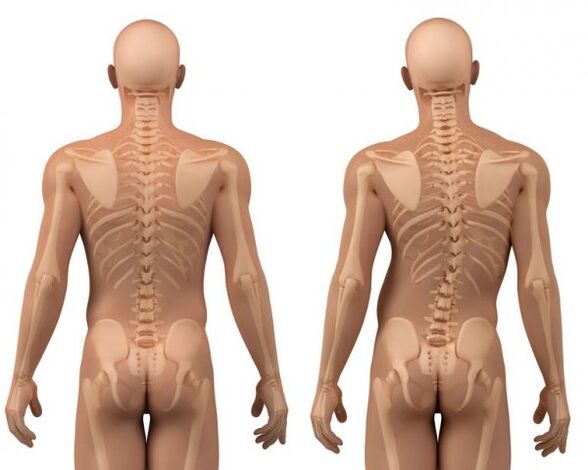
Other symptoms of scoliosis:
Observation!Scoliosis is characterized by compression of the spinal cord so that the discomfort is located between or under the shoulder blades. The pathological focus has clear contours and can spread to nearby areas only with muscle spasms.
kyphosis
Kyphosis is a backward curvature of the spine, in which the shoulder girdle is pulled forward and a curvature appears. In this case, the pain is located above the shoulder blades, is bilateral in nature, radiates to the neck, arm.

Mechanisms of pain formation in kyphosis:
With kyphosis, the vertebral artery is compressed, which leads to a deterioration of cerebral circulation, dysfunction of Organs internal organs.
radiculitis
The pathology is characterized by pinching of the lumbar roots that form the sciatic nerve. With the defeat of the upper section, the pain is localized under the scapula and below. Discomfort is bilateral, becomes more pronounced with sudden movements.
If left untreated, sciatica is accompanied by other symptoms:
- burning pain in the back (under the shoulder blades and in the lower back) - indicates pinching of the spinal roots;
- lumbago with irradiation in the leg;
- convulsions;
- violation of sensation in buttocks, lower back;
- numbness along the nerve (may be seen in the lower leg, thigh, foot).
Neuralgia
Inflammation of the nerve fibers in this anatomical region can cause pain under the shoulder blades. A common cause of pathology is hypothermia.
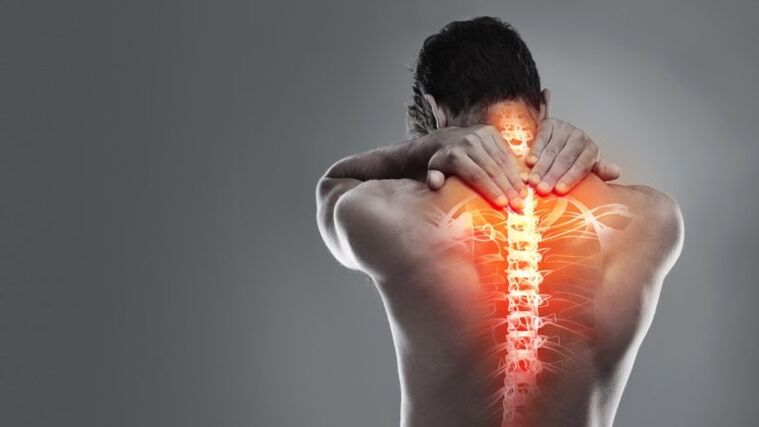
Inflammation can affect structures such as:
- Intercostal nerves. 1-4 pairs located along the lower edge of the ribs are affected. The pain is located under the shoulder blades and below on the sides of the chest, less often extending to its anterior sections.
- Supraspinatus and suprascapular nerves. It is characterized by the onset of pain in the shoulder blade region of the back in the clavicle region. Sometimes the symptom extends to the shoulders.
- The infraspinatus and subscapular nerves. Discomfort is felt under the scapula on the left or right. When inflammation spreads to the muscles, the pain increases when you move your hands.
Observation!In neuralgia, the pain is usually unilateral in nature - the symptom is located in the part that has undergone hypothermia.
Shoulder-scapular periarthrosis
It is characterized by inflammation of the shoulder joint and surrounding tissue. It is accompanied by difficulty in walking, which can only be removed after the muscles are warmed up.
In humeroscapular periarthrosis, discomfort is seen at the level of the shoulder blades and below. In the initial stage, it occurs after intense physical activity, as the disease progresses - at rest. Other symptoms of pathology:
- numbness of upper limbs;
- headache;
- decreased mobility of the spine.
heart pathology
Pain under the shoulder blades may indicate heart disease. This is due to the fact that branches of the parasympathetic trunk connected with the spinal cord and nerve roots go to the organ. If there is pain under the left scapula behind the back, the symptom may indicate a mild form of myocardial infarction. It may persist for several days, increase with movement and decrease with rest.
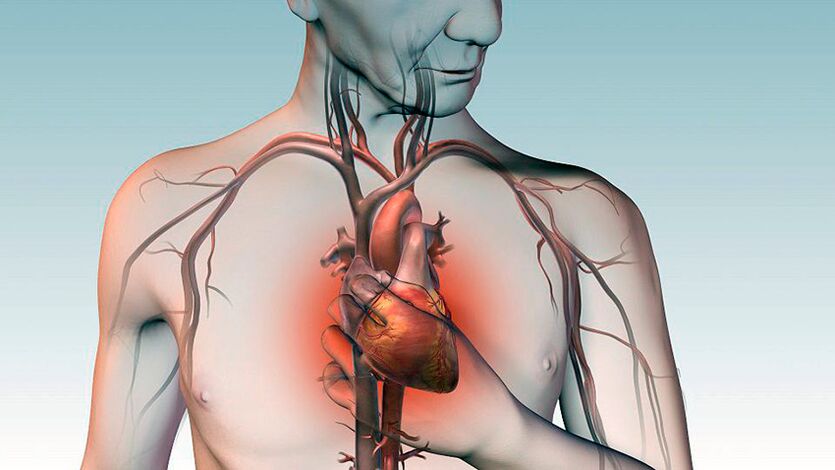
Other signs of pathology:
- burning, pressing pain behind the breastbone;
- heart rhythm disorder;
- heart palpitations;
- dyspnea;
- dizziness;
- nausea, vomiting;
- increased blood pressure.
Digestive tract diseases
The pain initiation mechanism is similar to the previous reason - propagation along nerve fibers. Symptom location depends on the affected organ, less often the discomfort is bilateral.
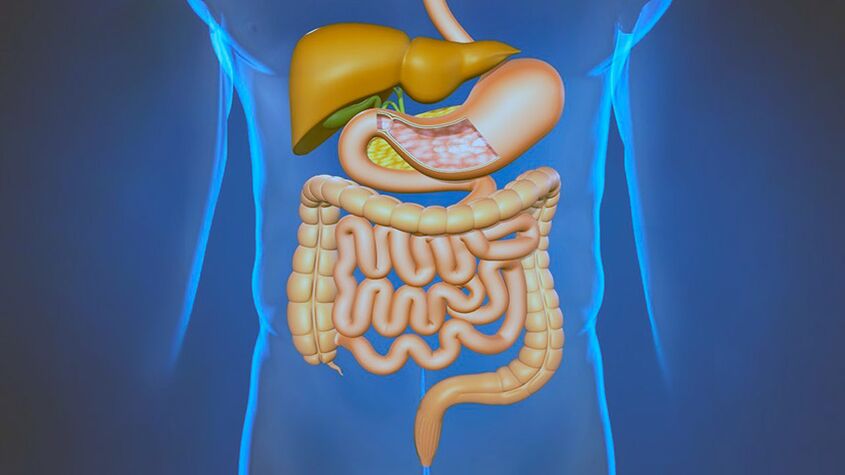
If the back hurts on the left under the scapula, development is possible:
- inflammation of the gastric mucosa;
- pancreatitis (inflammation of the pancreas);
- stomach ulcer.
Also, with these pathologies, there is nausea, vomiting, heartburn, belching, heaviness in the abdomen. If the ulcer complies with internal bleeding, there will be pale skin, low blood pressure, weakness, darkening of the stool.
A feeling of discomfort under the right shoulder blade may indicate such conditions:
- duodenal ulcer;
- hepatitis;
- cirrhosis of the liver;
- cholelithiasis.
Other causes of the symptom
The following factors can also cause pain in the shoulder blade area:
Types of pain
The nature of pain in the shoulder blade area may be different. Depending on this criterion, it is possible to assume a possible illness and determine the cause of the discomfort:
Which doctor should I see?
If painful sensations appear in the shoulder blade region, make an appointment with a neurologist. The doctor will test, establish a diagnosis, and determine treatment tactics. In case of detection of pathologies of internal organs, he will refer to a specialist with a narrow profile - gastroenterologist, cardiologist, orthopedist (depending on the supposed diagnosis).
Survey
To establish the cause of pain onset in the shoulder blade area, patients are assigned the following diagnostic procedures:
Observation!Pain below the shoulder blades is often indicative of neurological abnormalities. Therefore, CT and MRI are the "gold standard" in determining the cause of a symptom.
Treatment characteristics
The goal of treatment is not just to remove the pain, but also to eliminate the factor that causes it to appear. When seeking medical help, the painful syndrome is relieved in parallel, as well as the indication of etiological treatment aimed at eliminating the underlying disease.
The therapeutic program may include the following methods:
How to avoid discomfort in the shoulder blade region?
Every patient who has undergone a course of treatment is subsequently recommended to follow a series of preventive measures. They are needed to prevent the disease from recurring.
It is important to follow these rules:
- create favorable sleeping conditions - choose an orthopedic pillow and mattress of moderate firmness to support the physiological position of the spine;
- watch your posture;
- follow the principles of proper nutrition;
- try to prevent the exacerbation of chronic pathologies;
- give up on addictions (smoking, drinking alcohol);
- Visit your doctor regularly for preventive checkups.
Pain in the shoulder blades can be caused by somatic and neurological causes. In the latter case, the symptom appears sharply and is pronounced. Of somatic origin, pain gradually grows and persists for a long time, it does not depend on body movements.
Pain relievers can be used to relieve an unpleasant symptom. However, to completely eliminate the sensations of pain, it is important to undergo a complete treatment aimed at getting rid of the underlying pathology. Only a physician can develop the correct therapeutic course after a thorough examination.



































